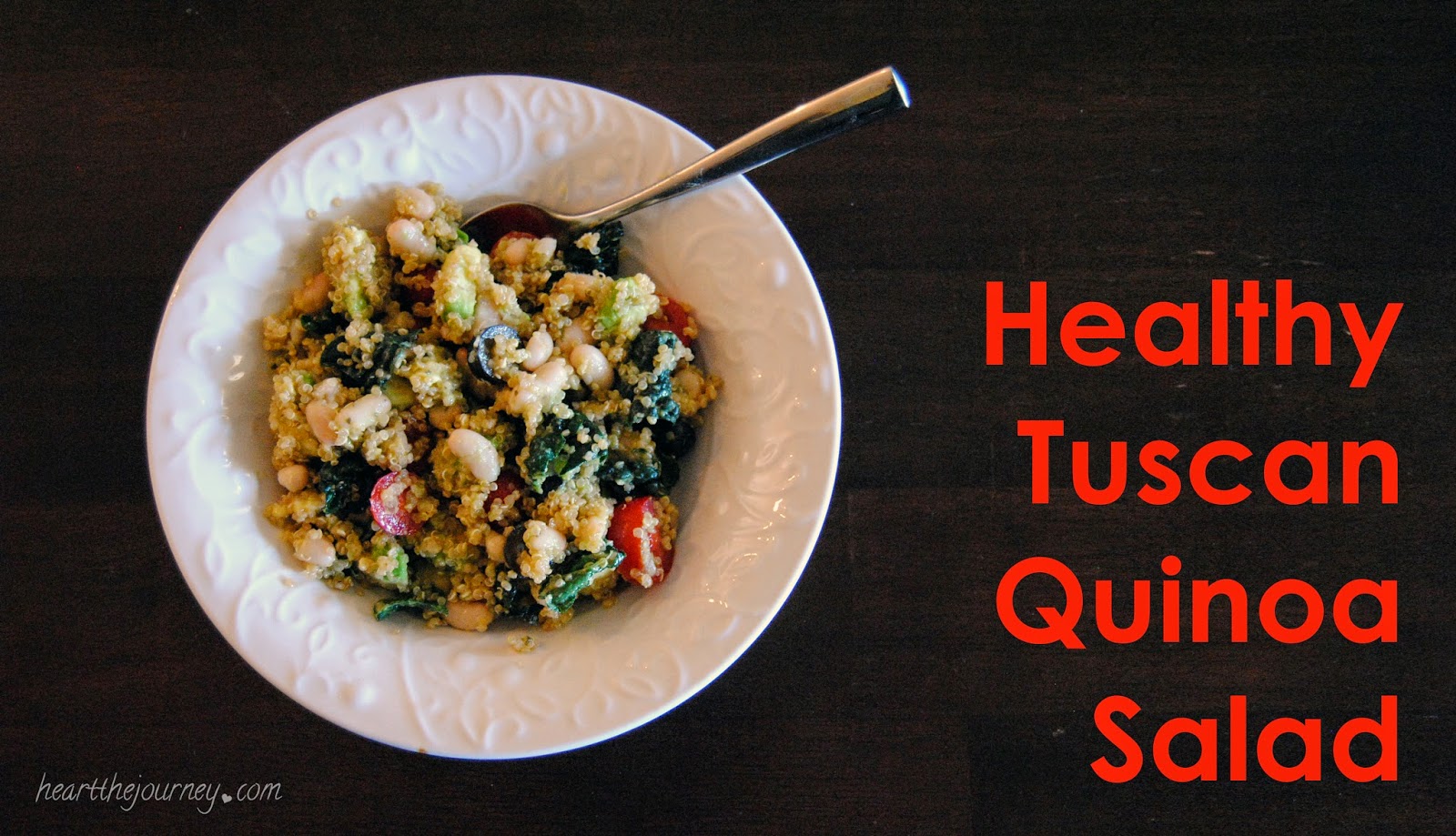I've been making a variation of this salad for several years but this is my favorite way to make (and eat) it.
It's super quick to whip up and, even better, it's so, so good for you! Plus it's Tone It Up approved!!
Kale is a leafy green cruciferous vegetable that is chock-full of essential vitamins A, C and K as well as minerals like copper, potassium, iron, manganese and phosphorus. A cup of fresh kale has only about 40 calories but packs almost 3 grams of protein. One cup of cooked kale has over 1000% more vitamin C than a cup of
cooked spinach and unlike spinach, kale's oxalate content is very low
which means that the calcium and iron in kale are highly absorbable in the human digestive system.
The high monounsaturated fat content of olives has been associated with reduced risk of cardiovascular disease. Diets rich in monounsaturated fat have been proven to decrease blood cholesterol, LDL cholesterol, and LDL:HDL ratio. Recent research studies have also shown that the monounsaturated fat
found in olives (and olive oil) can help to decrease blood pressure. In terms of their phytonutrient content, olives are nothing short of
astounding. Few high-fat foods offer such a diverse range of antioxidant
and anti-inflammatory nutrients—some of which are unique to olives
themselves. This may also make them a powerhouse of protection against cancer because chronic
oxidative stress and chronic inflammation can be key factors in the
development of cancer.
Avocado is another great source of monounsaturated fat, antioxidant and anti-inflammatory nutrients; all of which aid in proper body functions. This monounsaturated fat and the avocado's high fiber content makes it great for weight loss. Research has shown that monounsaturated fatty acids are more likely to be used as slow burning energy than stored as body fat. Plus, one cup of avocado provides about 7-8 grams of dietary fiber, making it excellent at regulating blood sugar. This slow burning energy and the feeling of satiety or satisfied fullness that you get from eating an avocado is one of the reasons they are known for reducing hunger and appetite. Avocado is also great for nourishing and increasing cellular turnover in skin.
Tomatoes are a rich source of vitamins A and C and folic acid. They contain a wide array of beneficial nutrients and antioxidants, including alpha-lipoic acid, lycopene, choline, folic acid, beta-carotene and lutein, which may lower your risk for developing cancer, high blood pressure, heart attack, diabetes, depression... even wrinkles and constipation.
Kidney beans (includes Cannellini) are a very good source of cholesterol-lowering fiber, as
are most other beans. In addition to lowering cholesterol, kidney beans'
high fiber content prevents blood sugar levels from rising too rapidly
after a meal, making these beans an especially good choice for
individuals with diabetes, insulin resistance or hypoglycemia. When
combined with whole grains such as rice, kidney beans provide virtually
fat-free high quality protein. Kidney beans are also an excellent source of molybdenum, folate, manganese, phosphorus, protein, vitamin B1, iron, potassium, magnesium, fatty acids, and amino acids. All of these key nutrients contribute to good overall heart health.
Quinoa is naturally gluten-free and contains iron, B-vitamins, magnesium, zinc, phosphorus, potassium, calcium, vitamin E and fiber. It is one of only a few plant foods that are considered a complete protein and comprised of all pernine essential amino acids. Botanically, quinoa is actually not classified as a grain. It is
a pseudo-cereal (a non-grassy plant used in much the same way as
cereals and grains with a similar nutritional profile). The seeds of
pseudo-cereals can be milled and ground into flour just as other grains
and cereals. It provides a variety of antioxidant phytonutrients, antioxidant flavonoids, and anti-inflammatory polysaccharides. The antioxidant and anti-inflammatory phytonutrients in quinoa also make
it a likely candidate for cancer risk reduction in humans. Many studies have shown that as whole grain intake increases,
the risk for cardiovascular disease, diabetes, High BP, colon cancer & obesity decreases.
So now that you know a little bit more about the amazing ingredients in this salad, let's get to the recipe!
______________________________
WHAT TO GET
SALAD:
1 cup uncooked quinoa (any variety)
1 1/2 cups water or broth
Pinch of Sea Salt
1/8 t Cumin
1/8 t Smoked Paprika
1/8 t Garlic Powder
1 large Avocado - diced
3/4 cup Cherry Tomatoes - halved
1/2 cup Black Olives - sliced
3/4 cup Tuscan Kale leaves (I found mine at Trader Joe's) - ripped into bite sized pieces
1 can Cannellini Beans - rinsed & drained
DRESSING:
Juice of half a lemon
1/4 cup Olive Oil
1/4 t Sea Salt
1/4 t Pepper
Sprinkle of Cilantro
WHAT TO DO
1 // Cook quinoa via package instructions. I mix quinoa, broth, sea salt, cumin, garlic powder & paprika in saucepan, bring to a boil then lower to a simmer for 15 minutes.
2 // While quinoa is cooking, prepare remaining salad ingredients and add to a mixing bowl.
3 // When quinoa is done, remove from stove and put into a bowl to cool.
4 // While quinoa is cooling, prepare dressing. Combine all dressing ingredients in a separate bowl and whisk to combine.
5 // In a large bowl or container, add quinoa, dressing and other salad ingredients all together and GENTLY fold to combine.
6 // Enjoy!
I'm not sure how many servings this makes (I tend to eat it right away out the bowl and then it's hard to tell), but I know it will yield quite a few 1 cup servings... maybe 6?
This is one of those recipes that is easy to play around with though, you can't really mess it up. So definitely feel free to subtract anything you don't care for and add anything else you do (like goat cheese, how amazing does that sounds??).
Let me know if you give this recipe a try and what you think!






No comments:
Post a Comment